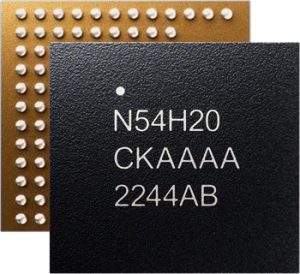
Configured for high processing efficiency, it got a ULPMark-CM score of 170 with 515 CoreMark (CoreMark is the workload for ULPMark-CM). Configured for high performance, it scored 132 ULPMark-CM and 1290 CoreMark. It also scored 165 ULPMark-CM at 3.0V (515 CoreMark) in the fixed voltage category.
These three results mean that the IC tops each category (out of 12 MCUs) for the benchmark – but a small note of caution: these are in-house results (as are most of the results in this EEMBC table), not certified results tested in the EEMBC labs.
“The results are remarkable,” said Nordic CTO Svein-Egil Nielsen. “nRF54H20 is our fourth-generation product series. With it, we aim to redefine processing power and energy efficiency. We’re eager to see what customers can create with these wireless solutions.”
Nordic is being unusually secretive about this family of ICs and is only releasing information in tiny drips – for example, the number of cores remains undisclosed at the time of writing.
The last meanigful update Electronics Weekly is aware of was in April when Nordic said: The dedicated application processor features double the processing power of the application processor in the nRF5340 SoC.” The dual Cortex-M33 nRF5340 got 514 CoreMark and 66 CoreMark/mA at 128MHz, and 257 CoreMark and 73 CoreMark/mA at 64MHz.
Find EEMBC’s ULPMark®-CoreMark results list here
See ‘Energy, best voltage’ column for the efficiency score.
The limited nRF54H20 product page can be found here







